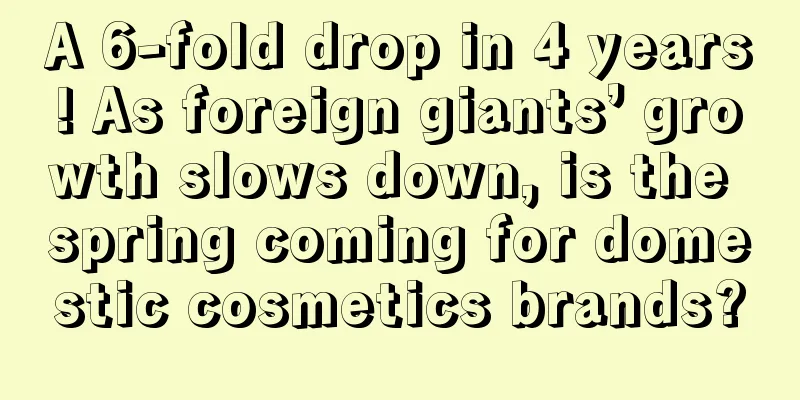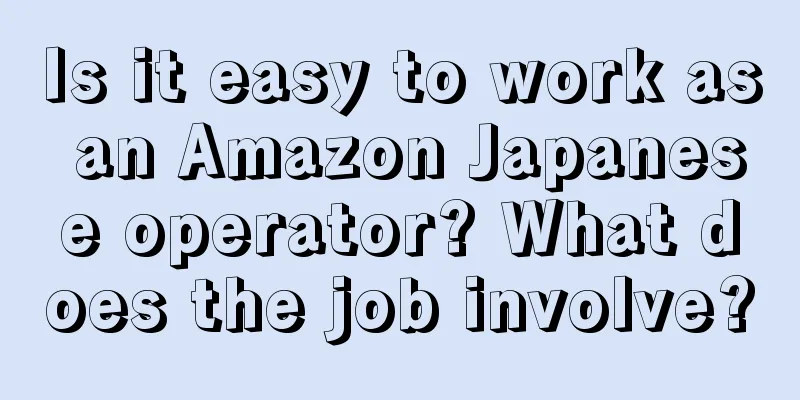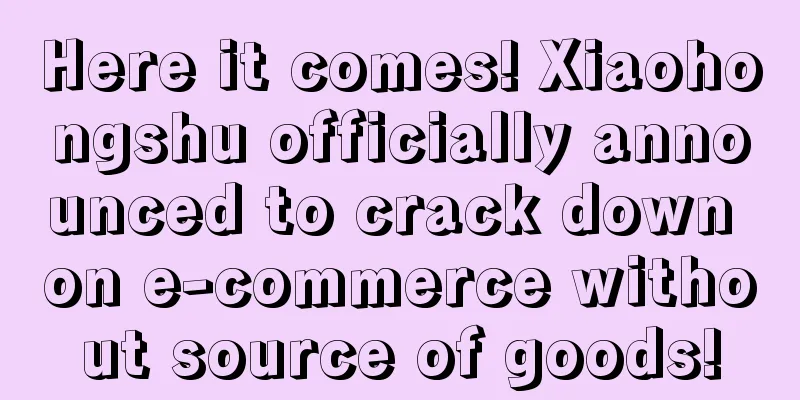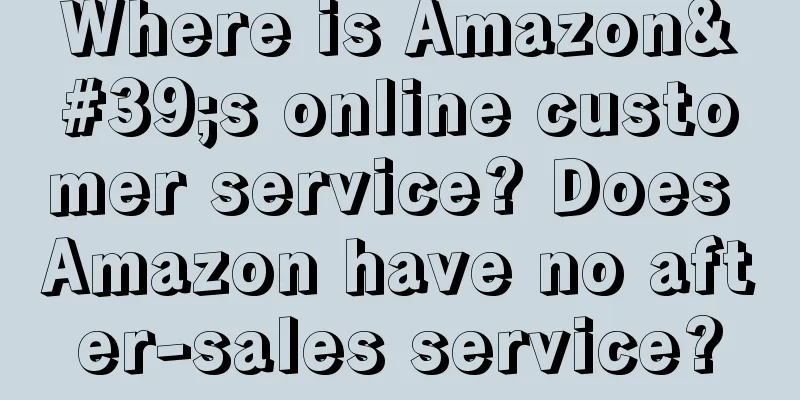A 6-fold drop in 4 years! As foreign giants’ growth slows down, is the spring coming for domestic cosmetics brands?

Although international brands still occupy a leading position in the Chinese cosmetics market, especially in the high-end product market, which is almost monopolized by international brands, the market fluctuations in recent years have made people see that a change has begun. The Chinese market, which is regarded as a hot spot by major brands, is more like a testing ground where all parties gather on the surface but undercurrents surge. In February 2023, two major international beauty giants, Estee Lauder and L'Oréal, released their financial reports. In the three months ending December 31, 2022, Estee Lauder's total revenue fell 17% year-on-year to US$4.62 billion, and its net profit attributable to shareholders fell 64% year-on-year to US$394 million. Among them, net sales in Asia/Pacific were US$1.57 billion (approximately RMB 10.567 billion), a year-on-year decline of 17%. In addition to the challenges brought about by the impact of the epidemic, the limited retail traffic in mainland China was also attributed to one of the important reasons for its sharp decline in performance. On the other hand, according to its 2022 financial report, L'Oréal is at its peak performance in the past decade, with sales of 38.26 billion euros (approximately RMB 278.4 billion), an increase of 18.5% compared to 2021 and 23.4% compared to 2019. Both sales and growth rates set a record high in the past decade. Image source: L'Oréal China's official Weibo However, according to its five major business regions around the world, although they all achieved positive growth, the North Asia region where China is located only increased by 6.6%, ranking last. Among them, Japan and South Korea both achieved double-digit growth, and the growth rate of the Chinese mainland market was only 5.5%. According to the financial report data of the past few years, it can be found that from 2019 to 2022, the sales growth in the Chinese region was 35%, 27%, over 20% and 5.5% respectively, and the growth rate dropped by nearly 6 times in 4 years. As the world's number one cosmetics group, it is actually far-fetched to use the impact of the epidemic as an excuse for L'Oréal's performance in the Chinese market. With a significant slowdown in growth, it is necessary to look for more reasons within itself and the market. 1. After being the world's second largest company for 25 years, how much does L'Oréal, which is now losing momentum, value the Chinese market?Strictly speaking, the rapid development of China's cosmetics industry was also driven by international giants after the reform and opening up. Were there any cosmetics brands before that? Yes, but the market was not mature enough. As far as the cosmetics category is concerned, the Chinese cosmetics market started at a relatively low level. When it first appeared in the Chinese market, it was considered a high-end consumer product. After the birth of China's first modern cosmetics company, Guangshengxing (the predecessor of Shanghai Jahwa) more than a hundred years ago, cosmetics began to enter the lives of ordinary people. In 1905, Guangshengxing launched the "Shuangmei Brand" floral water and vanishing cream, which was basically the same time period as the birth of many internationally renowned brands, such as Pond's vanishing cream. Image source: Screenshot of Shanghai Jahwa's official website However, the war completely stagnated the development of China's early cosmetics market. Although Guangshenghang was split into two during the war and became "Shanghai Jahwa", and also created well-known brands such as "Liushen" and "Herborst", the development of the entire Chinese cosmetics market lagged behind, and therefore for a long time it became the world of international brands, and traditional domestic products declined. L'Oréal began to fully enter the Chinese market in 1997 and settled in Shanghai. It was not early, but this did not affect its rapid expansion in the Chinese market. L'Oréal and its brands soon gained a large number of users in the Chinese market. Image source: L'Oréal China's official Weibo This is closely related to its marketing strategy. L'Oreal adopts a brand "pyramid" strategy in the Chinese market, using high-end brands, mid-range brands and mass brands as the top, body and base of the pyramid. For example, Lancôme and HR are high-end brands at the top of the pyramid. Many people start to get in touch with high-end cosmetics from Lancôme; L'Oreal Paris is a mid-range brand in the body, and Maybelline is a mass brand at the base. It can be said that it is the enlightenment brand of cosmetics used by many post-80s consumers. Including the categories of cleansing, skin care and cosmeceuticals, there are brands with different positioning facing different consumer groups, which also fills the gaps in some categories in the Chinese market. And with the previous years of research on the Chinese market and the opening of its own factories, it can ensure that the cost of its popular brands is controllable, and thus ensure that the product prices are kept low. For example, Maybelline's lipstick was sold for about 30 yuan at the beginning, and was very popular among female college students who had just graduated from campus. Later, L'Oréal set its sights on the sinking market and acquired Little Nurse, a skincare brand that once ranked among the top three in the Chinese market, in 2004 to expand into the sinking market. Ten years after entering the Chinese market, L'Oréal has completed the layout of its brand matrix and achieved a comprehensive layout of the high, medium and low-end Chinese cosmetics market. In terms of products, these international giants have always attached great importance to research and development . Almost every one of them has its own exclusive scientific research results, which are applied to different cosmetics to play corresponding roles. L'Oreal's main product is the anti-aging and anti-wrinkle ingredient Bossan, which was developed by a professional laboratory in 2006. It has been widely used in the brand matrix of the L'Oreal Group and is also well recognized by consumers. In terms of marketing, L'Oreal also made a big move. When it first entered the Chinese market, it invited Gong Li as its spokesperson. The cooperation has lasted for more than 20 years. The spokespersons that followed were all top stars. In addition, L’Oréal has also done some very brilliant marketing cases. For example, YSL, a high-end brand under L’Oréal, successfully became popular in 2015 and 2016 through nicknames such as “male killer color”, and lipstick colors with various nicknames have been released one after another in the entire cosmetics industry. Therefore, L'Oréal has developed rapidly in the Chinese market. From 1997 to 2007, the Chinese market became L'Oréal's tenth largest market in the world; in 2010, it became L'Oréal's third largest market in the world; in 2011, its sales in the Chinese market exceeded 10 billion yuan for the first time; and by 2015, it became L'Oréal's second largest market in the world. So to what extent does L'Oréal attach importance to the Chinese market? Let's take a look at some specific performances. For example, L'Oréal and its brands currently have 31 locations in China, including one R&D and innovation center, two factories and five distribution centers. In terms of market regional division, before 2021, L'Oréal divided its global business areas into three major areas: Western Europe, North America and emerging markets in its financial reports. The Asia-Pacific region to which China belongs, Latin America, Eastern Europe, Africa and the Middle East together constitute the emerging market region. However, since 2019, the Asia-Pacific region has performed outstandingly, surpassing Western Europe and North America with sales of 9.658 billion euros, accounting for the highest share of overall sales, reaching 32.33%. In 2020, the new coronavirus pandemic broke out globally, and L'Oréal's sales fell 4.1% year-on-year. However, among all regions, only the Asia-Pacific region achieved positive growth of 3.5%, and its share in total revenue increased to 35%. Therefore, L'Oréal re-divided its business segments in 2021, separating out the North Asia region, including the Chinese market, and eventually formed the current five business regions. Shanghai became the headquarters of L'Oréal North Asia. At the beginning of 2022, Fabrice Megarbane, President of L'Oréal North Asia and CEO of China, made it clear at a strategic communication meeting that as the group's North Asia headquarters and one of the six global R&D hubs, China has become the core strategic market of the L'Oréal Group. But it is indeed unexpected that L'Oréal's growth rate has dropped several times since it went against the trend during the epidemic. L'Oreal itself may not have exposed any problems or strategic mistakes, but the market has changed. In today's Chinese market, the industry competition is fierce, and market competition is no longer limited to the competition between companies of the same level and size to open up the market. The maturity of the entire industrial chain, the improvement of the overall market environment, the evolution of consumer thinking, etc., have greatly shortened the distance between all market participants. Even new forces are constantly moving forward at the starting line with various conditions. L'Oréal, which once experienced a slowdown in growth in 2015 due to the overall weakness of the cosmetics market, can no longer be explained by the impact of the pandemic in light of its overall performance in the three years since the outbreak of the COVID-19 pandemic. The core reason for the withdrawal of some foreign-funded affordable cosmetics brands from the Chinese market is still the competitive environment. The collective efforts of domestic brands have begun to put pressure on these foreign brands and international giants. 2. Old domestic brands are making a comeback, new brands are thriving, and the Chinese cosmetics market is not that simpleMany brands were unable to compete with international brands offline when they were born, so their development at that time was largely survival in the cracks. With the rapid development and maturity of domestic e-commerce networks and the advent of the new media era, domestic brands that used to survive under the pressure of international brands have the opportunity and space to overtake them. Online channels have become the main tool for new brands to enter the market and obtain traffic, and have also become a window for old-generation brands to re-enter the consumer's sight and gain market recognition. In recent years, a large number of domestic cosmetics brands that have rapidly gained market share are actually old domestic brands, especially the top domestic brands, most of which have been established for at least ten years. In terms of market share and overall revenue, these domestic brands are far from being comparable to international giants such as L'Oreal, but without exception, they have achieved a double harvest of sales and word of mouth. Each domestic brand has found its own path to counterattack. 1. PROYA, from a “fake foreign brand” to the No. 1 domestic brandPROYA is a brand with a story. When it was founded in 2003, it was labeled as a "fake foreign brand". At that time, choosing a brand name that resembles a foreign brand was a good way for domestic cosmetics brands to survive in the gap between foreign giants. Japan has Shiseido, and China has Chando; LVMH Group has Guerlain in France, and China has Guerlain Marie Claire... Some brands even packaged themselves as foreign brands and packaged their founders as foreigners. Proya is a combination of Shiseido's "Aupres" and "L'Oreal", and was once criticized by many as a "copycat version of L'Oreal". Now the brand has cleared its name. Image source: PROYA official Weibo What PROYA really relies on first is the misaligned competition with foreign giants, which is crucial. When PROYA was first established, it targeted the lower-tier markets instead of attacking first- and second-tier cities, thus directly avoiding the main battlefields of international brands. But soon, foreign giants also set their sights on the sinking market, and used a series of means to beat PROYA so badly that promotions were ineffective. In other words, at this time, it was meaningless to compete with foreign giants on price. In 2007, PROYA spent 6 million yuan to ask Ye Maozhong for advice, which opened up a new situation. At that time, Ye Maozhong gave two suggestions. The first was to clarify the brand's tone and product positioning, and focus on the concepts of moisturizing, locking in moisture, and activating water. The second was to enhance the brand image, enter department store channels, and advertise heavily. In 2011, it invested 200 million yuan to buy the annual naming rights of Hunan Satellite TV's Golden Eagle Theater. That year, it achieved a 33% sales growth. But this was only a short-term effect, and it still couldn't resist the offensive of foreign giants. In 2015 and 2016, PROYA fell into negative growth. The turning point came after the company went public in 2017. In addition to continuing to increase investment in marketing and promotion, PROYA also made efforts in other areas. Originally, offline channels were PROYA's traditional advantage. According to the "2022 PROYA Development Status and Business Layout Analysis" released by Future Think Tank, PROYA's offline channel outlets once reached 22,190. After the company went public, PROYA began to make a comprehensive shift, using online as its main channel and keeping up with the new ways of playing on major platforms. For example, it started to engage in Taobao live streaming in 2018 and cooperated with Li Jiaqi and Viya; by 2020, it began to deploy Douyin stores and build its own live broadcast team... Today, nearly 90% of PROYA's revenue comes from online channels. At the product level, it imitated international brands and promoted the strategy of large single products. Although this behavior was once ridiculed by peers, the results were good. In 2019, PROYA launched the bubble mask, which sold more than 1 million boxes online in the first month. In July of that year, it won the first place in the category list of multiple platforms such as "TikTok Beauty and Skin Care List" and "Tmall Mask Monthly Sales Ranking". Later, it launched the skin care concept of "Morning C and Night A", and launched the big-name products "Ruby Essence" and "Double Anti-Essence", which became its two best-selling products by relying on their main ingredients. PROYA has completely made a comeback and got rid of the label of "fake foreign brand". 2. Pechoin, the counterattack of an old domestic brandFounded in 1931, Pechoin is one of the few cosmetics manufacturers with a long history in China and was born in Shanghai. In 2022, Pechoin ranked TOP14 on the "World's Most Valuable Beauty List". This is the fourth consecutive year that Pechoin has maintained an upward trend, and it has been the only Chinese brand to be included in the TOP15 of the list for two consecutive years. Image source: Screenshot of Pechoin’s official website When Pechoin was first established, it once sold well all over the country and even exported to Southeast Asia with its "Pechoin Cold Cream" which featured the concept of natural skin care. Many celebrities at that time were its users, such as Ruan Lingyu. After that, it quickly expanded its product categories and channels. It once became one of the most popular skin care products for the public due to its price advantage, and also brought the skin care concept of "care and nourishment" to consumers. Like many domestic brands, Pechoin began to decline in the early 1990s due to the impact of foreign cosmetics entering the Chinese market. The brand was aging, outdated, low-priced, and out of date. In order to find a way out, Pechoin, like many domestic brands, began to learn from foreign brands. Pechoin continued to use the product positioning of "herbal skin care", but launched another hit product "Vaseline Moisturizing Cream" to compete with Clinique's "Butter". Soon, the three major product lines of Pechoin Skin Balm, Vaseline Moisturizing Cream and Glycerin No. 1 became Pechoin's life-saving combination. In 2013, Pechoin was presented as a "state gift" to African friends. This was the first highlight moment for Pechoin after its decline. In terms of channels, Pechoin began to focus on third- and fourth-tier cities to avoid head-on confrontation with foreign brands. After several years of persistence, Pechoin's retail sales reached 13.8 billion yuan in 2016, becoming the largest Chinese skincare brand in terms of sales, second only to three foreign brands: Mary Kay, L'Oréal Paris, and Olay. Another highlight moment came in 2017, when Pechoin made a one-shot long picture in the style of the Republic of China, "1931", which became a hit on WeChat Moments overnight; afterwards, it successively launched the childhood nostalgic time-travel blockbuster "Han Meimei Run" and the life blockbuster "As the Saying Is Well", which brought huge traffic and exposure to this old domestic product, and officially entered the sight of young consumers in a very traditional way. After paving the way, Pechoin continued to strengthen its image as a domestic product through joint ventures. For example, in 2017, it collaborated with the jewelry designer of the Palace Museum to launch the limited edition Yanlai Treasure Box, which was sold out in 35 seconds, with sales of 294 million yuan, winning the sales champion in the "beauty category"; in 2018, it collaborated with the Palace Museum to launch a beauty set, which ranked first in the pre-sale of Double Eleven. On "Double Eleven" in 2019, Pechoin joined hands with the Dunhuang Museum to launch the traditional culture "Dunhuang Set", which achieved sales of 856 million yuan across the entire network. In this way, Pechoin, as a time-honored Chinese brand, combined with the youthful application of traditional culture, reorganized its brand tone, and re-established its brand image as a new Chinese brand. Consumers are paying more and more attention to this time-honored Chinese brand. Combined with the huge traffic brought by Pechoin's layout on mainstream e-commerce platforms such as Tmall and JD.com, its market performance is also getting better and better. In line with its main product positioning of "herbal skin care", Pechoin also uses "vacuum cold immersion extraction technology" to strengthen consumers' reasons for buying. Old brands are coming up with new ideas, and Pechoin has also found a way out for the brand in its own way, fully exploring and using traditional culture as a handle for the national trend, gaining a large number of fans born in the 1990s and 2000s, and the old domestic product has completed a counterattack. 3. Huaxizi, an example of a new domestic brandAmong the emerging domestic brands, Huaxizi is an eye-catching one. Since its establishment in 2017, its revenue has skyrocketed in just a few years. It does not have any offline stores and relies purely on online channels. In 2021, its sales have reached 5.4 billion yuan, surpassing the performance of many international giants in this field, and it has emerged as a dark horse. The greatest success of Huaxizi lies in its differentiation, which has created a very distinctive brand feature. Image source: Huaxizi official Weibo Huaxizi was founded in Hangzhou in 2017. There are several main reasons for the birth of Huaxizi's current brand image. First, in the cosmetics market at that time, the overall performance of cosmetics products in product design was mediocre, and there was a lack of eye-catching new brands. Second, Chinese style began to be popular, and young consumers were very receptive to products with strong Chinese style elements and traditional cultural elements, which began to form a popular trend. Therefore, Hua Xizi boldly integrated traditional Chinese culture into its brand genes and product design. Based on the division of target groups, the first focus of Huaxizi's product design is on the appearance that can most directly reach consumers. Huaxizi combines some of the most iconic cultural elements with modern product design, which has won praise from consumers. For example, its brand logo is inspired by the small windows of Jiangnan gardens, and the product craftsmanship mostly replicates traditional Chinese craftsmanship. Take the 2020 "Miao Impression" high-end series of products as an example, which include silver pendant oriental makeup box, silver-gilt butterfly shadow makeup palette, small machete eyebrow chalk, heart-lock lipstick, silver-gilt jade makeup brush, etc. The appearance design incorporates Miao cultural elements and traditional silver forging technology. The engraving technique of Miao silver, one of the intangible cultural heritage of the Miao ethnic group, is combined with the oriental micro-carving technology to highly restore the Miao silver-making technique on the product. In terms of appearance design, the Miao totem "Butterfly Mother" is adopted, and floral elements are integrated. For example, the lipstick in the shape of a love lock has a palace-style packaging and even a relief design with a story on the lipstick paste. In addition, the company recruited product experience officers from seed users to explore user needs and improve product design. This unique product design instantly made the Huaxizi brand stand out from other brands and become a unique one. In addition to using the attraction brought by this visual stimulation full of traditional cultural atmosphere, Hua Xizi also pays great attention to product research and development. It has its own cosmetics science and technology innovation center and has established the first CMF laboratory built by a beauty brand in China. In 2022, it also announced that it would invest 1 billion yuan in five years to focus on product innovation, basic research and applied basic research. Another very important point is that Huaxizi is positioned in the mid-to-low end and takes a people-friendly route, but in terms of pricing, it has formed a certain differentiation from similar competitors. For example, the average price of cosmetics brands such as Perfect Diary is between 50 yuan and 60 yuan. Based on its brand positioning, Huaxizi has raised the average price to 130 yuan. It can be said that Hua Xizi's unique and distinctive brand characteristics are themselves a very lethal weapon. The brand itself can stand out. It seems no surprise that Hua Xizi has become a unique presence in the domestic cosmetics industry. 3. Welcome the spring of domestic cosmetics, but to rise, we still need to consolidate the core of the productIn general, international giants including L'Oreal have entered the Chinese market for decades. The market position they have established depends to a certain extent on China's economic, market and industrial conditions at the time. The Chinese market at that time was also at a stage where it needed to quickly and massively absorb more nutrients and promote the development of related domestic industries. The new models, new concepts and new products brought by these international giants will inevitably have a huge impact on some domestic industries. Now, the performance of international giants including L'Oreal in the Chinese market has shown obvious fluctuations, and the reasons are not complicated. First, with the consumption upgrade in the Chinese market and the fact that most Chinese brands focus on the mid- and low-end markets, L'Oréal has focused more on building a high-end brand image in the Chinese market in recent years, and is more inclined to invest in medical beauty and luxury products. In recent years, L'Oréal has been investing and acquiring medical beauty-related products in the global market. In 2019, L'Oréal invested in Functionalab Group, a Canadian medical beauty company. Its high-end medical beauty brand, Repair Lift, has been accumulating strength in the Chinese market for a long time and is ready to start increasing investment. Given the current competitive environment in the Chinese market, any slackness in any aspect will be seized by competitors. Secondly, the speed of the rise of Chinese cosmetics brands is astonishing. Based on the insight into China's young consumer groups, precise attacks from the product, channel and marketing levels are the key to the rapid growth of domestic brands in recent years. For example, on the product side, the concepts of functional skin care, ingredient party, and equivalent substitutes have created a lot of room for development for domestic brands, especially for functional skin care that targets the segmented needs of consumer groups. Each company is launching products with different functions to consumers in a targeted manner, and is also constantly exploring product selling points that can form certain competitive barriers and differentiation. Moreover, with the improvement of basic research and development capabilities and raw material production capabilities in the upstream of the domestic cosmetics industry chain, there has been great progress in product research and development compared with the past. For example, Huaxi Biology is the world's largest hyaluronic acid producer and an important collagen manufacturer. Coupled with the timely layout of major emerging e-commerce platforms and social networks, as well as the grasp of consumer preferences at the marketing level, a large amount of accurate traffic was quickly obtained, allowing domestic brands to avoid the market coverage of industry giants and develop rapidly in another space. This may be the best time for domestic brands to rise and grow, but it is only the beginning, and this window of opportunity may not last long. Whether a domestic brand can grow into a group enterprise that can compete with international giants such as L'Oreal in the Chinese domestic market will directly determine the future situation of the Chinese cosmetics industry. However, the future market will surely be a hundred flowers blooming, and it will be difficult to stand out and be the only one. For domestic cosmetics brands, although they have mastered the current upward path and become the pioneers of this round of youth trend, they are generally strong in marketing and relatively weak in basic research and development, which directly leads to the fact that the core of the product is not enough to support the growth of a brand in the long term. One of the best examples from an international giant is L'Oreal's Bosone, which has been upgraded several times since its development and is still worthy of L'Oreal's main ingredient. Including Estee Lauder, etc., all have their own main ingredients, and they are all strong enough to withstand the impact. Moreover, as a large group, they may show a certain lag in response when a round of trends emerges, but it does not mean that they cannot see the trend. If domestic brands want to survive and develop longer, they must make good use of their leading advantages and the lag in response of large groups, and make a qualitative leap in product level in order to bear the trust of consumers. Author: lyy; Editor: yu; Reviewer: Single, ZZ WeChat public account: New Consumption Think Tank (ID: cychuangye) |
<<: Xiaohongshu bloggers, are they becoming more and more "detailed"?
>>: Content Operations: What should I do if my article has very few clicks?
Recommend
How does Pinduoduo gain popularity? How to do it specifically?
For Pinduoduo stores, popularity is very important...
Spring marketing: Which brand comes out on top?
In spring, everything comes back to life, and the ...
Is it easy to do cross-border e-commerce without a source of goods? How to do it?
As a new business model, cross-border e-commerce w...
Can Shopify import Amazon products? How to upload products to Shopify?
In order to increase the traffic and conversion of...
What are the four most commonly used software on Amazon?
When opening a store and doing business online, me...
QQ Nest is becoming a new hotspot for brand marketing
Young people always like brands that are emotional...
Is Shopee a good platform? Introduction to Shopee platform
There are not only Chinese merchants on the Shopee...
The 12-year-old "Empresses in the Palace" has also made the 39.9 yuan EQ course popular
This article analyzes and studies the phenomenon o...
4 recent favorite cases
In this era of information explosion, how can bran...
Is WeChat’s ability to directly complete Taobao shopping just the beginning of ecological integration?
Recently, the interaction between WeChat and Taoba...
Does the Amazon credit card registration require a legal person? Can the Amazon credit card be unbound?
In recent years, Amazon has been developing better...
What is Amazon AWS? What is Amazon AWS used for?
Now many domestic platforms have launched cloud pl...
Franchise loss revelation: 10 million yuan to open 21 convenience stores, became the most regrettable investment
Text | Zhai Yuanyuan The last Carrefour supermarke...
McDonald’s collapsed, can Chinese burgers take over?
Explore the McDonald's food safety incident, a...
How is the eBay positive review rate calculated? How can I improve the eBay positive review rate?
Merchants on all platforms need to pay attention t...









